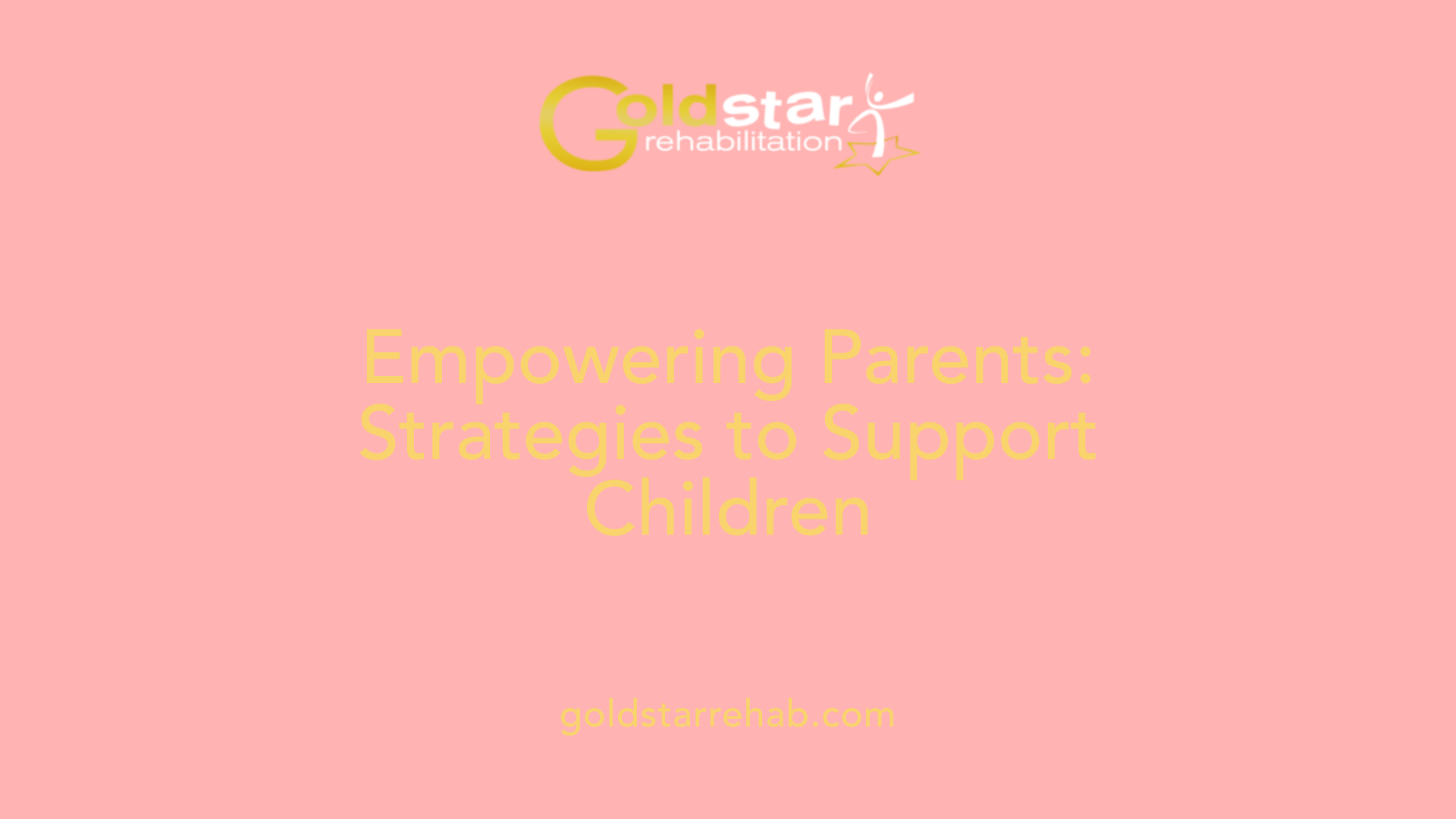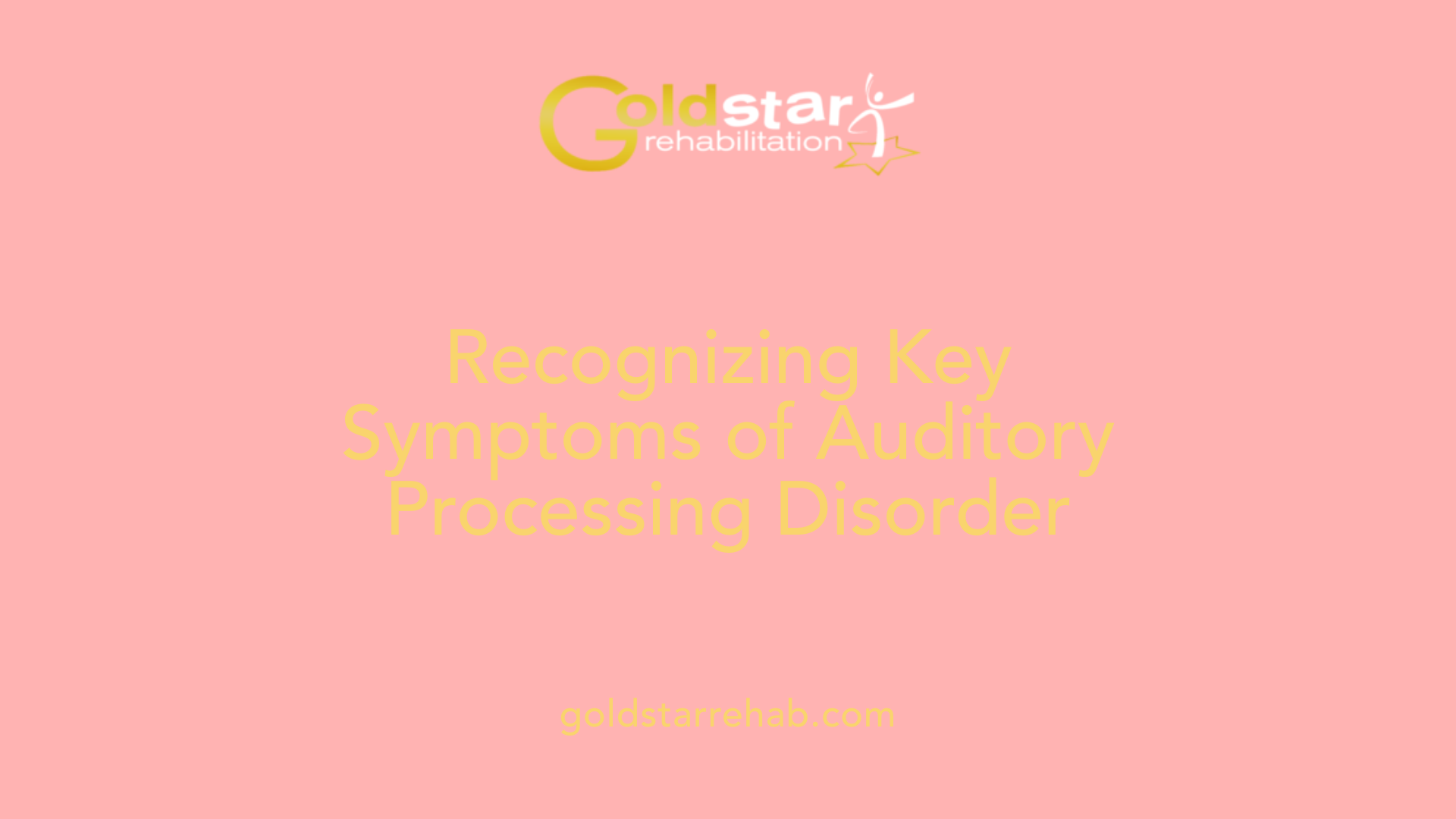Understanding Gold Star Rehab's Unique Approach
Gold Star Rehab adopts a comprehensive approach to managing musculoskeletal disorders, integrating advanced methodologies and evidence-based practices tailored to individual patient needs. This article delves into their innovative strategies, effective treatments, and the outcomes of their methodologies, providing insights for both personal health and professional practices.
Gold Star Rehab's Methodological Framework
What methodologies does Gold Star Rehab use for addressing musculoskeletal disorders?
Gold Star Rehab adopts a multifaceted approach to tackle musculoskeletal disorders, emphasizing personalized care and evidence-based practices. Their methodologies are grounded in comprehensive Models of Care (MoCs), which ensure that each patient receives tailored interventions at the precise moment they are needed. This approach takes into account biological, psychological, and social factors that influence recovery.
Key Components of the Methodological Framework
- Chronic Care Model: This model focuses on strengthening the interaction between patients and healthcare providers, enhancing patient engagement in their own care.
- Biopsychosocial Model: This approach facilitates a holistic understanding of health, acknowledging how biological, psychological, and social factors intertwine to impact musculoskeletal health.
- Patient-Centered Care: Gold Star Rehab places significant emphasis on listening to patients' needs and preferences, ensuring treatments align with their values and recovery goals.
- Non-Pharmacological Treatments: The center employs a range of non-invasive therapeutic options, including orthoses, manual therapy, and functional training, specifically tailored to the unique needs of each patient.
- Patient-Reported Measures: Utilizing tools that capture patient feedback allows Gold Star Rehab to assess the effectiveness of their treatments. This continuous evaluation helps refine and enhance treatment protocols.
How does Gold Star Rehab ensure personalized care?
Personalization is at the heart of Gold Star Rehab's methodology. Most importantly, they acknowledge that no two patients are the same, even if they present similar musculoskeletal conditions.
- Tailored Rehabilitation Plans: Patients are classified based on various factors, including the severity of their condition and individual irritability levels. This classification helps decide the intensity of rehabilitation.
- Targeted Interventions: Instead of a generic approach, therapists adapt treatment strategies, factoring in the patient's lifestyle and preferences. This level of customization can include strength training, ergonomic education, and rehabilitation techniques designed to address specific impairments.
- Ongoing Monitoring: Regular follow-ups and assessments are integral. This means adjusting treatment plans based on patient progress, ensuring that interventions remain effective.
- Collaborative Care: Gold Star Rehab collaborates closely with various healthcare professionals. This multidisciplinary approach enriches the treatment experience and encompasses all aspects of patient recovery, ensuring comprehensive care.
Outcomes of the Methodological Framework
The effectiveness of Gold Star Rehab’s approach is reflected in improved patient outcomes and enhanced overall satisfaction. By integrating a personalized care framework with evidence-based methodologies, they can address musculoskeletal disorders efficiently, leading to better functional recovery.
| Methodological Components |
Description |
Benefits |
| Chronic Care Model |
Enhances patient-provider interaction |
Improved engagement in care |
| Biopsychosocial Model |
Considers holistic health aspects |
Comprehensive understanding of patient needs |
| Non-Pharmacological Treatments |
Focus on functional and manual therapies |
Reduced dependence on medications/surgery |
| Tailored Plans |
Individualized rehabilitation strategies |
Enhanced recovery aligned with personal goals |
| Patient-Reported Measures |
Captures patient feedback for assessments |
Continuous improvement in treatment efficacy |
Gold Star Rehab stands as a model for effective management of musculoskeletal disorders through its innovative methodologies and dedication to personalized patient care.
Treatment Approaches for Common Musculoskeletal Conditions

What are some specific treatments available for musculoskeletal conditions like sarcopenia, tendinopathies, and arthritis?
Managing musculoskeletal disorders, particularly sarcopenia, tendinopathies, and arthritis, involves a multifaceted approach utilizing various treatment strategies. Here’s a breakdown of effective treatments categorized by condition:
Treatments for Sarcopenia
- Resistance Training: High-intensity resistance training is considered the cornerstone of sarcopenia treatment. It helps in regaining muscle mass and improving functional capabilities.
- Nutritional Support: Adequate protein intake is essential to support muscle repair and growth. Additionally, supplementation with vitamin D and antioxidants is encouraged to enhance muscle function and overall health.
Treatments for Tendinopathies
- Exercise Therapy: Progressive loading exercises are vital for improving tendon structure, while eccentric exercises are often used to alleviate pain and promote healing.
- Corticosteroid Injections: In cases of significant inflammation, corticosteroids may be administered to provide relief from pain.
Treatments for Arthritis
- Lifestyle Modifications: Patients are encouraged to engage in regular physical activity, which can alleviate symptoms and improve joint function over time.
- Non-Steroidal Anti-Inflammatory Drugs (NSAIDs): These medications help reduce pain and swelling associated with arthritis.
- Physical Therapy: Techniques like manual therapy and tailored exercise programs are introduced to improve function and reduce stiffness in affected joints.
Emerging Therapies:
- Whole-body Vibration Training: This technique shows promise in enhancing muscle strength and balance, particularly among older adults.
- Probiotics: Preliminary studies suggest that certain probiotics may aid in reducing inflammation related to musculoskeletal conditions.
How do exercise and nutritional interventions play a role in treatment?
A holistic approach that combines exercise with nutritional interventions is emphasized in managing musculoskeletal disorders. Such strategies not only address the symptoms but also tackle the underlying issues that contribute to these conditions.
Role of Exercise
- Enhances Mobility: Regular exercise improves flexibility, strength, and endurance, which can significantly reduce the risk of falls and fractures among the elderly.
- Prevents Muscle Atrophy: For individuals facing sarcopenia, exercise is crucial in maintaining muscle mass and functional independence.
- Pain Management: Physical activity can serve as a natural pain relief method by promoting the release of endorphins and improving blood circulation to areas of discomfort.
Nutritional Interventions
- Protein-Rich Diets: For optimal muscle synthesis, incorporating protein-rich foods is essential, especially in older adults combating sarcopenia.
- Anti-Inflammatory Foods: Diets rich in omega-3 fatty acids, antioxidants, and fibers can help reduce inflammation associated with both arthritis and tendinopathies.
In summary, the treatment of musculoskeletal conditions like sarcopenia, tendinopathies, and arthritis must focus on an individualized regimen that incorporates exercise and nutrition. This integrated approach can result in enhanced outcomes, improved quality of life, and a significant reduction in the risk of disability over time.
Gold Star Rehab's Community Impact and Comparisons
How does Gold Star Rehab compare to other rehabilitation services?
Gold Star Rehab stands out among rehabilitation services, bolstered by its proactive community outreach efforts. A significant aspect of its reputation comes from the Gold Star awareness campaign, which has played a pivotal role in enhancing public perceptions of local health facilities. Specifically, studies suggest that individuals exposed to the campaign report a more favorable view of surrounding health centers, associating their improvements in service quality with Gold Star’s outreach.
The positive reception seems more pronounced among certain demographic groups, particularly among those with university degrees and male individuals. This targeted demographic engagement could inform future outreach strategies to maximize awareness across diverse populations.
In comparison to other rehab services, Gold Star’s intentional focus on community perception allows it to position itself favorably as a reputable option. Their campaign doesn’t just promote services; it fosters a sense of trust within the community, essential for rehabilitation centers striving to attract and retain clients.
Impact of public perception
Public perception is a critical factor for rehabilitation facilities, significantly influencing patient trust and engagement. In the case of Gold Star Rehab, feedback indicates a perceived improvement in local health facilities correlating with the campaign’s visibility. This bolstered reputation not only attracts clients but also instills a sense of community pride and confidence in the services offered.
Individuals reflecting on their experiences with Gold Star are likely to engage in word-of-mouth promotion, further enhancing community awareness and trust. The campaign's effective messaging resonates particularly well with younger, educated demographics, suggesting an opportunity for extending outreach efforts to engage populations who may be less reached by traditional marketing avenues.
Comparison Table of Gold Star Rehab and Other Services
| Criteria |
Gold Star Rehab |
Other Rehabilitation Services |
| Campaign Awareness Impact |
Strong positive reception |
Variable, weaker community engagement |
| Demographic Reach |
Higher among educated males |
Broader focus, less targeted |
| Community Trust |
High due to active outreach |
Moderate, often reliant on referrals |
| Public Perception Improvement |
Notable increase since campaign |
Uncertain, often stable or declining |
| Engagement Strategies |
Tailored outreach initiatives |
Generalized marketing efforts |
As evidenced in the table, Gold Star Rehab has leveraged its community impact and public perception to create a competitive edge in the rehabilitation landscape. By maintaining a consistent presence in the community and promoting awareness through its campaign, Gold Star Rehab remains a preferred choice for individuals seeking reliable rehab services. Future strategies could focus on expanding reach to underrepresented groups while capitalizing on existing positive perceptions to further enhance its community role.
Managing Musculoskeletal Injuries in the Military
What strategies exist for the care and management of musculoskeletal injuries in military contexts?
Musculoskeletal injuries (MSKIs) have become a critical concern for military personnel, posing significant challenges to combat readiness and mission success. The prevalence of these injuries is alarming, with over 500,000 cases reported in active-duty soldiers in 2021 alone. MSKIs result in loss of duty days and contribute considerably to nonbattle injuries (DNBI), which account for at least 30% of medical evacuations. Consequently, a robust management strategy is essential for maintaining operational capabilities.
To tackle the burden of MSKIs effectively, military settings are adopting several comprehensive strategies:
Evidence-Based Prevention: Initiatives emphasizing injury prevention are paramount. This includes physical conditioning programs designed to enhance strength and flexibility, which are vital in reducing the incidence of injuries. Incorporating exercises that focus on stability and functional movement can significantly mitigate risk.
Standardized Care Protocols: The implementation of standardized care protocols, such as those advocated by the Army's ATR (Active Treatment and Rehabilitation) program, streamlines the management of injuries. These protocols ensure that service members receive consistent care across different settings, enhancing clarity and efficiency.
Multidisciplinary Care Teams: A coordinated approach involving various healthcare professionals fosters efficient management of MSKIs. Multidisciplinary teams can address various aspects of musculoskeletal health, from rehabilitation specialists to orthopedic surgeons, thus providing holistic care tailored to individual needs.
Technology Leveraging: Innovations like wearable sensors and biofeedback systems are being integrated into treatment protocols. These technologies help monitor physical activity and identify potential injury risks, allowing for timely interventions before issues escalate.
Education and Training: There is a need to bridge the training gap among healthcare providers. Regular education on the latest findings and rehabilitation techniques ensures that all personnel are equipped with the knowledge to deliver effective care.
Why is standardized care important in the management of musculoskeletal injuries?
Establishing standardized care protocols is crucial for enhancing the overall management of musculoskeletal injuries. Standardization ensures that service members receive optimal care regardless of their location or the provider treating them. Benefits of standardized care include:
Enhanced Treatment Efficiency: By following established protocols, healthcare providers can streamline treatment processes, reducing delays and increasing accessible care for injured service members.
Improved Patient Outcomes: Standardization has been shown to lead to better symptom management and functional recovery. Consistent approaches in treatment delivery enable healthcare teams to track progress effectively.
Higher Satisfaction Rates: Both patients and healthcare providers report higher satisfaction when care is standardized. This can be attributed to clearer communication, efficient processes, and improved outcomes, all of which contribute to a positive healthcare experience.
In conclusion, addressing the multifaceted challenges of musculoskeletal injuries in military contexts requires a dedicated focus on standardized care protocols and effective management strategies. Initiatives like evidence-based prevention, multidisciplinary care teams, and leveraging modern technologies will be key in optimizing the health and readiness of military personnel.
Gold Star Rehab's Commitment to Evidence-Based Practices

What are the evidence-based practices and implementation outcomes related to Gold Star Rehab's approaches?
Gold Star Rehab places a strong emphasis on evidence-based practices to enhance patient outcomes and promote quality care and safety across its services, particularly in vascular access.
The organization employs a team of board-certified vascular access RN providers who utilize proven techniques in combination with advanced technologies. This approach is designed to ensure operational efficiency while prioritizing the patient's health and recovery. Evidence-based practices include:
- Standardized Protocols: Gold Star integrates standardized protocols to follow during vascular access procedures, minimizing risks and ensuring consistency in care.
- Patient-Centric Approaches: By focusing on individualized treatment plans tailored to patient needs, Gold Star ensures that interventions are relevant and beneficial for each person.
- Continuous Training: Staff undergoes ongoing training in the latest evidence-based techniques to maintain high standards of care.
Additionally, while Cognitive Behavioral Therapy (CBT) is not specific to Gold Star’s initiatives, it serves as an illustrative example of how evidence-based methodologies can bring about positive treatment outcomes in various fields. Such validated approaches from psychology can inspire similar methods in physical rehabilitation settings.
Gold Star has a clear mission that embraces the importance of delivering exceptional, evidence-based services. This mission aligns seamlessly with their vision to revolutionize vascular access delivery through clinical excellence.
Implementation of Practices
The implementation of these evidence-based practices yields significant outcomes. Key outcomes from these practices encompass:
- Improved Patient Satisfaction: Patients report higher satisfaction levels due to the personalized and effective nature of care.
- Enhanced Treatment Efficacy: Using evidence-based methods, Gold Star demonstrates improved recovery rates and functional outcomes for patients.
- Operational Efficiency: Implementing standardized protocols helps reduce unnecessary procedures or complications, leading to better resource utilization.
Furthermore, the outcome of evidence-based rehabilitation practices is highly contingent on coordinated efforts among multidisciplinary teams. For instance, this includes collaborative treatment planning, which has proven essential in ensuring smooth patient transitions within the care continuum.
In summary, Gold Star Rehab’s unwavering commitment to leveraging evidence-based practices not only elevates the quality of care provided to patients but also enhances overall operational efficiency. As a result, patient outcomes improve significantly, fostering an environment of trust and satisfaction. By continually updating practices based on the latest research, Gold Star Rehab remains at the forefront of innovative rehabilitation solutions that prioritize patient health and well-being.
Rehabilitation Strategies and Techniques Explored
What insights can be provided into rehabilitation strategies and techniques for treating musculoskeletal disorders?
Rehabilitation for musculoskeletal disorders requires a multidisciplinary approach that incorporates a variety of treatment options and techniques to effectively restore function. This approach emphasizes collaboration among healthcare professionals, including physical therapists, occupational therapists, and medical doctors, ensuring comprehensive care tailored to each individual's needs.
Early Intervention: Initiating rehabilitation early, especially in the acute phase of an injury, helps in symptom management and can significantly enhance recovery outcomes.
Non-Invasive Methods: Techniques such as exercise therapy, manual therapy, and physical modalities should be prioritized. These methods focus on improving strength, flexibility, and joint function without the need for invasive procedures.
Innovative Technologies: The integration of advanced technologies like virtual reality and serious games in rehabilitation programs has shown promise in enhancing patient engagement and motivation. These tools not only make rehabilitation more enjoyable but also improve retention of therapy goals.
Holistic Approach: Addressing lifestyle factors, such as nutrition and physical activity, alongside mental health support is crucial for improving long-term outcomes. Such holistic strategies recognize the interconnectedness of physical and psychological health.
Multidisciplinary approach in rehabilitation
A multidisciplinary approach in rehabilitation is essential because it allows for comprehensive care.
- Team Coordination: Effective communication among dietitians, psychologists, and physiotherapists helps align treatment goals.
- Tailored Intervention Plans: Each team member contributes their expertise to create individualized care plans that are appropriate for the patient's specific condition.
- Patient-Centric Focus: Engaging patients in the process by including them in care planning leads to increased adherence and better outcomes.
Moreso, this collaborative environment fosters innovative solutions to complex problems often encountered in treating musculoskeletal disorders, ensuring better rehabilitation pathways for patients.
Innovative and individualized care plans
Individualized care plans are foundational to an effective rehabilitation strategy, especially for complex musculoskeletal issues. Some key aspects of this approach include:
Assessment of Irritability Levels: A new classification system categorizes patients based on their level of irritability—high, moderate, or low. This differentiation allows for tailored interventions that consider not just pathoanatomic diagnoses but also the specific needs and tolerances of the patient.
Customized Exercise Regimens: Exercise should be specifically designed to fit the individual’s functional status, injury severity, and personal preferences, which can increase compliance and improve outcomes.
Integration of Prophylactic Practices: Strength training, flexibility exercises, and ergonomic education should be incorporated not only to treat existing conditions but also to prevent future injuries. This proactive approach can be crucial, especially for those at risk due to their occupational demands.
| Rehabilitation Aspect |
Multidisciplinary Focus |
Individualized Strategy |
| Early and Intensive Rehabilitation |
Coordination Among Experts |
Customized Treatment Plans |
| Non-Invasive Techniques |
Shared Knowledge |
Patient-Centric Interventions |
| Utilizing Technology |
Shared Resources |
Personalized Monitoring |
| Holistic Treatment |
Team Collaboration |
Tailored Educational Support |
| Prophylactic Practices |
Ergonomics Awareness |
Individual Risk Assessments |
In summary, combining innovative care strategies with a multidisciplinary approach allows for effective management of musculoskeletal disorders. With rehabilitation tailored to the patient's needs and integrated with technological advances, significant improvements in patient outcomes and satisfaction can be achieved.
The Role of Physical Therapy in Musculoskeletal Treatment

How do physical therapy practices contribute to the treatment and expected outcomes of musculoskeletal disorders?
Physical therapy practices significantly enhance the treatment and outcomes for patients with musculoskeletal disorders through a comprehensive, evidence-based biopsychosocial approach. This concept integrates biological, psychological, and social factors, ensuring a holistic treatment program tailored to individual needs.
The first component is assessment. Physical therapists utilize a variety of techniques to evaluate a patient's unique situation, identifying specific risk factors that may exacerbate their musculoskeletal condition. This thorough evaluation helps in formulating personalized rehabilitation plans, taking into account not only the physical symptoms but also any underlying psychological and social factors that may affect healing.
Once a plan is established, treatment often includes a mix of passive and active modalities.
This combination not only addresses existing issues but also emphasizes preventive strategies, helping to mitigate future injuries by asymptotically enhancing physical wellness.
Engagement and education are key in a successful physical therapy program. By providing patients with knowledge about their condition and the importance of rehabilitation, physical therapists empower individuals to take an active role in their recovery. This empowerment is crucial, as it fosters a sense of responsibility and adherence to treatment plans, essential for sustained improvement in functional outcomes and overall quality of life.
The collaborative nature of physical therapy, often involving multidisciplinary teams, enriches this process further. Collaboration among healthcare providers—physicians, nutritionists, and mental health professionals—ensures comprehensive and coordinated care. This integrative approach not only addresses the musculoskeletal condition but also promotes overall health and well-being.
Treatment Outcomes
The outcomes from effective physical therapy practices in managing musculoskeletal disorders are well-documented. Patients frequently report:
- Improved pain management: Individualized approaches lead to significant reductions in discomfort.
- Enhanced functional abilities: As physical function improves, patients enjoy greater independence.
- Higher patient satisfaction: A tailored treatment model fosters trust and engagement, boosting overall satisfaction with the healthcare experience.
In summary, the effectiveness of physical therapy in treating musculoskeletal disorders cannot be overstated. By employing a biopsychosocial approach, incorporating educational components, and facilitating interdisciplinary communication, physical therapists play a vital role in optimizing patient recovery and enhancing quality of life. Through deliberate rehabilitation strategies designed around individual patient profiles, outcomes can be significantly improved, paving the way for more resilient and healthier populations.
Linking Prevention, Training, and Ergonomics in Injury Reduction

How are prevention, training, and ergonomics linked to reducing musculoskeletal injuries?
Prevention, training, and ergonomics form a cohesive strategy essential for minimizing the risk of musculoskeletal injuries (MSDs) in various settings, including workplaces. By focusing on ergonomics, employers can enhance the design and organization of tasks to fit worker capabilities, effectively reducing the risk of injuries associated with poor posture, repetitive motions, and excessive physical exertion.
Ergonomic Principles
Implementing ergonomic principles involves assessing job tasks and work environments to identify and modify potential hazards. For example, arranging workstations to promote natural body positioning can help reduce muscle strain. Ergonomics can also influence equipment design, ensuring tools are suitable for the user, which aids in reducing repetitive stress injuries and enhances overall efficiency.
Role of preventive measures
Preventive measures play a pivotal role in safeguarding workers' health. They include proactive strategies designed to educate and empower employees. Proper training on lifting techniques is one notable example. Employees equipped with knowledge on safe lifting practices are less likely to suffer from injuries related to improper mechanics.
Key Components in an Effective Strategy
Characteristics of a successful prevention strategy include:
- Ergonomic Assessment: Regular evaluations of workplace designs and tasks to align them with ergonomic standards.
- Training Programs: Comprehensive education for employees on identifying risk factors, practicing safe movements, and understanding ergonomics.
- Management Support: Leadership involvement is crucial in promoting and ensuring adherence to safety protocols and ergonomics, creating a culture of safety.
Implementing Effective Ergonomic Solutions
To facilitate the implementation of effective ergonomic solutions, a multidisciplinary approach is beneficial. This may include:
| Strategy |
Description |
Expected Outcome |
| Ergonomic Training |
Ongoing education on workplace safety and proper techniques |
Reduction in injury rates and improved compliance |
| Workplace Modifications |
Altering tools and workstations based on ergonomic principles |
Increased comfort and productivity |
| Early Intervention Programs |
Encouraging staff to report symptoms early |
Quicker recovery and reduced severity of injuries |
Adopting a comprehensive framework that combines training, preventive measures, and ergonomic considerations leads to a marked decrease in the incidence of MSDs. Additionally, it fosters a culture of safety that not only protects employees but also enhances overall organizational efficiency. Developing a robust injury prevention program that integrates these elements uniquely positions organizations to minimize risks, enhance patient outcomes, and improve workplace satisfaction.
Concluding Thoughts
The interconnectedness of prevention, training, and ergonomic designs cannot be understated. By creating a work environment that prioritizes physical well-being through thoughtful ergonomic practices and thorough training, organizations can expect lower injury rates, leading to healthier employees and greater productivity.
The STAR-Shoulder Approaches in Rehabilitation
What is the STAR-Shoulder approach and how is it applied in rehabilitation?
The STAR-Shoulder approach is a tailored rehabilitation strategy aimed at addressing common shoulder disorders, a prevalent issue leading to pain and functional impairment among various populations, including the elderly and active military personnel. This innovative method integrates a classification system that links conventional pathoanatomic diagnoses with an evaluation of tissue irritability and specific impairments.
Classification System and Outcomes
The STAR-Shoulder approach introduces a three-tier classification system based on irritability: high, moderate, and low. This classification is designed to inform treatment intensity and the nature of rehabilitation interventions needed to cater to individual patient needs.
| Irritability Level |
Treatment Focus |
Expected Outcomes |
| High |
Gentle mobilization and pain relief |
Immediate pain reduction, gradual increase in function |
| Moderate |
Strengthening and moderate mobilization |
Enhanced function, pain management |
| Low |
Aggressive rehabilitation techniques |
Significant functional improvements, higher activity levels |
Evidence supports that aligning rehabilitation strategies with this classification significantly enhances patient outcomes, exemplified by reductions in both pain levels and functional impairments. By understanding that two patients with the same diagnosis can have different rehabilitation needs based on irritability, healthcare professionals are encouraged to adopt a more nuanced approach.
This personalized framework improves clinical decision-making, allowing for effective rehabilitation strategies that cater specifically to each patient’s condition and daily challenges. Notably, this individualized treatment plan is beneficial for older adults struggling with musculoskeletal disorders who may face heightened risks of mobility impairments and disability.
In addition to patient education on the classification system, ongoing monitoring and reassessment are crucial aspects of the STAR-Shoulder approach. This continuous evaluation ensures that treatment plans can be adjusted based on the patient's progress and changing needs, fostering better engagement and commitment to rehabilitation.
Adopting the STAR-Shoulder approach not only promotes more effective clinical management of shoulder disorders but can also lead to reduced healthcare costs associated with ineffective treatments or unnecessary surgical interventions. By optimizing rehabilitation outcomes, this strategy potentially lessens the burden associated with musculoskeletal disorders, enabling patients to maintain their independence and improve their overall quality of life.
Knowledge Impact on Personal Health and Professional Insights
How can knowledge of these topics support personal health decisions or provide professional insight into musculoskeletal disorders?
Understanding musculoskeletal disorders (MSDs) is crucial for both personal health decisions and for professionals managing patient care. With conditions such as sarcopenia, tendinopathies, and arthritis being prevalent, knowledge empowers individuals to recognize early signs of these disorders. This awareness facilitates timely interventions, potentially preventing more severe implications down the line.
Personal Health Decisions
Individuals benefit from awareness of risk factors linked to MSDs. For example, learning about how physical inactivity and poor ergonomics contribute to issues like tendinopathies and osteoarthritis can motivate people to make lifestyle adjustments. Here are some personal strategies:
- Exercise Regularly: Engaging in regular physical activity helps in maintaining muscle strength and joint function, thus reducing the risks associated with MSDs.
- Ergonomic Adjustments: Implementing ergonomics in workspaces can significantly decrease the likelihood of developing work-related musculoskeletal disorders (WMSDs).
- Nutritional Considerations: Understanding nutritional interventions can aid in maintaining muscle mass, especially for aging populations dealing with sarcopenia.
- Symptom Recognition: Recognizing symptoms early can drive individuals to seek appropriate treatments, whether they are over-the-counter remedies or professional therapies, ensuring a proactive approach to health.
Professional Insights
For healthcare professionals, staying informed about MSDs translates to improved patient care. Knowledge allows for effective management strategies that incorporate individualized treatment plans. Key insights include:
- Tailored Rehabilitation: Professionals can use criteria like the proposed classification system for shoulder disorders that considers tissue irritability, enabling tailored rehabilitation protocols for each patient.
- Multiprofessional Collaboration: Successful management often requires a multidisciplinary approach, enhancing patient outcomes by integrating various specialties.
- Prevention Programs: Understanding the economic impact of MSDs underscores the importance of implementing preventive measures. For instance, workplace wellness programs can significantly reduce lost productivity and disability costs related to MSPIs.
- Effective Communication: Knowledge fosters better communication between healthcare providers and patients, enabling shared decision-making processes that engage patients in their treatment.
More About MSDs
The economic burden of MSDs is substantial, with reports suggesting that at least 30% of medical evacuations in military settings are due to nonbattle injuries, many of which stem from musculoskeletal conditions. Successful interventions can result in enhanced clinical efficiency and patient satisfaction, highlighting the importance of proper care programs.
By fostering a greater understanding of musculoskeletal disorders and their implications, individuals can make informed health decisions while professionals can devise comprehensive, effective care strategies. Ultimately, well-informed choices lead to improved health outcomes and a healthier workforce.
| Aspect |
Personal Approach |
Professional Implementation |
| Exercise |
Regular physical activity to prevent MSDs |
Tailored rehabilitation programs |
| Ergonomics |
Workplace adjustments to mitigate pain |
Wellness programs in corporate settings |
| Nutritional Awareness |
Dietary changes to support muscle health |
Nutritional guidance as part of care plans |
| Symptom Management |
Early recognition of symptoms |
Proactive treatment plans based on symptomatology |
| Economic Considerations |
Lower personal costs through prevention |
Reduced employer costs due to less absenteeism |
Knowledge of musculoskeletal disorders equips individuals and professionals alike to mitigate risk factors, advocate for needed changes, and strive for better health outcomes in both personal and organizational contexts.
Impact of Musculoskeletal Disorders in the Elderly
Sarcopenia, Tendinopathies, and Arthritis in the Elderly
Musculoskeletal disorders in older adults, particularly sarcopenia, tendinopathies, and arthritis, pose severe challenges to health and well-being. Sarcopenia refers to the progressive loss of muscle mass and strength, which can greatly affect mobility and independence as individuals age. Similarly, tendinopathies, or tendon disorders, can lead to chronic pain and decreased physical performance, making everyday activities difficult. Add to this the prevalence of arthritis, which involves joint inflammation and pain, and the combination of these conditions creates significant barriers to maintaining a good quality of life.
Interrelations of Disorders and Impact on Quality of Life
These disorders are closely interlinked, a phenomenon often referred to as the 'STAR' triad. As muscle mass declines, the risk of falls and fractures increases, leading to further complications and disability. This interconnectedness indicates that one condition can exacerbate the others, creating a cycle of deterioration in health and functionality. Consequently, patients may experience not only physical impairments but also psychological effects, such as depression and anxiety, stemming from their health limitations. The collective impact of these musculoskeletal disorders not only diminishes mobility but also reduces the overall quality of life for the elderly, highlighting the critical need for effective management strategies.
Exploring the 'STAR' Triad in Musculoskeletal Disorders
Overview of STAR triad
The 'STAR' triad represents a compelling framework to understand various musculoskeletal disorders prevalent in the elderly, namely sarcopenia, tendinopathies, and arthritis.
- Sarcopenia: This condition involves the gradual loss of muscle mass and function, significantly impacting mobility and overall strength.
- Tendinopathies: These disorders affect tendons, leading to pain and reduced range of motion. Tendinopathies are particularly common in individuals who frequently engage in repetitive activities.
- Arthritis: Arthritis manifests as joint inflammation, causing pain, stiffness, and decreased functionality, which can exacerbate the challenges posed by the other two components of the triad.
These interconnected disorders lead to an increased risk of falls, fractures, and disability, ultimately impairing a person's quality of life.
Risk factors and health implications
As individuals age, the likelihood of developing conditions within the STAR triad escalates. Factors contributing to these disorders include:
- Sedentary lifestyle: Limited physical activity accelerates musculoskeletal decline.
- Nutritional deficiencies: Inadequate intake of essential nutrients affects muscle health and recovery.
- Chronic diseases: Conditions such as diabetes or cardiovascular diseases can further complicate musculoskeletal health.
The implications of the STAR triad on health are profound. For elderly individuals, managing sarcopenia, tendinopathies, and arthritis is not merely about alleviating symptoms; it requires a strategic approach to enhance mobility and prevent life-altering consequences, such as falls and subsequent fractures.
To effectively combat these conditions, an individualized treatment strategy is essential, which may include prescribed physical exercise or nutritional interventions tailored to the patient's specific needs. By doing so, healthcare providers can help maintain mobility and quality of life for many senior patients.
Advancements in Predictive and Diagnostic Approaches
New Approaches in Prediction and Diagnosis
The ongoing evolution in managing musculoskeletal disorders (MSK) emphasizes the need for innovative predictive and diagnostic methods. For conditions such as sarcopenia, tendinopathies, and arthritis—the disorders encompassed within the 'STAR' triad—developing novel predictive tools is vital. These tools can better assess risk factors, such as fall risk and potential for disability, enhancing early intervention strategies.
One promising direction is the integration of technology, including wearable devices that monitor physical activity and muscle function in real time. This enables clinicians to tailor individualized treatment plans promptly and efficiently. Additionally, refined diagnostic protocols that account for the different levels of tissue irritability in patients can lead to more personalized care and better management of rehabilitation processes.
Monitoring and Prognosis in Musculoskeletal Management
Monitoring the progress of patients with musculoskeletal disorders is crucial for effective management. Continuous assessment strategies not only help in tracking the efficacy of treatment plans but also inform necessary adjustments to rehabilitation protocols. For instance, using patient-reported outcome measures can provide valuable insights into how well interventions are working.
Furthermore, employing standardized care protocols and quality assurance processes can enhance prognosis within military settings, where musculoskeletal injuries contribute significantly to nonbattle injuries and disability discharges. These frameworks encourage consistent monitoring of health outcomes, which is essential for improving service members’ combat readiness and overall functional health.
Efforts to streamline predictive and diagnostic approaches within both civilian and military contexts are essential. This ensures that healthcare providers can address musculoskeletal conditions effectively, leading to better patient outcomes and higher satisfaction among providers and patients alike. Developing these advancements remains critical as we seek to improve the quality of care in managing prevalent musculoskeletal disorders.
Individualized Treatment Approaches in Musculoskeletal Care
Personalized Care Strategies
To effectively manage musculoskeletal disorders, especially within the elderly population, an individualized treatment approach is essential. This method acknowledges the uniqueness of each patient's condition and lifestyle, particularly when addressing issues like sarcopenia, tendinopathies, and arthritis.
By tailoring treatment plans, healthcare providers can take into account a patient's specific symptoms and functional impairments. For instance, individuals with high irritability may require a different rehabilitation intensity than those with low irritability, even if both have similar diagnoses. This understanding allows for a more effective intervention strategy that promotes better outcomes.
Integration of Exercise and Nutrition
Physical exercise plays a pivotal role in managing musculoskeletal disorders. Regular exercise helps in building muscle strength, improving joint function, and enhancing overall mobility. Moreover, nutritional interventions can support muscle health and recovery, providing necessary nutrients for tissue repair and maintenance.
An individualized plan might include strength training and flexibility exercises, alongside dietary adjustments that focus on adequate protein intake and anti-inflammatory foods.
Implementing these strategies collectively contributes to a comprehensive approach to treatment, emphasizing the importance of not only addressing the symptoms but also improving the patient’s overall quality of life. The end goal is to mitigate the risks associated with musculoskeletal disorders, such as falls and disability, while fostering independence in daily activities.
Utilizing Multidisciplinary Care Models in Military Settings
Benefits of multidisciplinary care
Integrating a multidisciplinary approach in military healthcare programs for musculoskeletal disorders can dramatically enhance patient outcomes. Collaborative efforts among various healthcare professionals—physiotherapists, orthopedic specialists, nutritionists, and psychosocial support teams—are essential in managing complex conditions like sarcopenia, tendinopathies, and arthritis.
This teamwork fosters more efficient diagnosis and treatment, allowing for the development of tailored intervention strategies that are crucial in ensuring the effective management of musculoskeletal disorders (MSKIs). Such coordinated care helps streamline communication among providers, thereby minimizing delays in treatment, which can be vital for maintaining the operational readiness of service members.
In addition to improved clinical outcomes, a multidisciplinary model is linked to higher patient satisfaction. When service members receive care from a cohesive team that addresses their physical, psychological, and nutritional needs, the likelihood of achieving significant symptom improvement and functional restoration increases.
Implementation in military musculoskeletal programs
Implementing multidisciplinary programs in military settings involves overcoming several barriers, such as psychological challenges and insufficient training among staff. Yet, there are also prominent facilitators that can enhance the effectiveness of these programs.
Examples include:
- Physical Co-location: Having healthcare providers in the same location can optimize patient access to various services.
- Effective Communication Practices: Open lines of communication help in better coordination of care, ensuring that all team members are aligned in their treatment approach.
- Presence of Champions: Advocates within the healthcare system can play a vital role in promoting and sustaining these collaborative efforts.
Despite barriers, successful implementation of multidisciplinary musculoskeletal care has shown to improve clinical efficiency, resulting in better management of MSKIs. This is critical, given that musculoskeletal conditions significantly contribute to lost duty days in the military and can lead to long-term disability among service members. As such, developing and sustaining multidisciplinary care models is essential in providing high-quality healthcare and enhancing combat readiness.
Overcoming Barriers in Military Musculoskeletal Care
Psychological, Training, and Environmental Barriers
Musculoskeletal disorders (MSKIs) present notable challenges within military settings. One of the significant barriers to effective care is psychological factors, including stress and mental health issues that hinder personnel from seeking help or adhering to treatment plans.
Additionally, there's often a lack of comprehensive training among healthcare staff regarding the latest management techniques for MSKIs. This knowledge gap can lead to ineffective treatment and frustration for both providers and patients. Finally, environmental factors, like limited access to care facilities or equipment, can impede timely and effective management of musculoskeletal conditions.
Strategies to Address Implementation Barriers
To mitigate these barriers, several strategies can be employed. First, fostering a culture of well-being within military units can encourage personnel to confront psychological challenges. Education programs aimed at reducing stigma around seeking help can significantly improve outcomes.
Co-locating healthcare providers can enhance communication and collaboration, ensuring that personnel receive coordinated care that addresses their specific needs. Furthermore, training initiatives focusing on the latest evidence-based practices for MSKIs can equip healthcare professionals with the skills needed to provide effective interventions.
Lastly, the presence of champions or advocates for musculoskeletal care within military settings can drive the implementation of these strategic initiatives, ultimately leading to improved patient outcomes and operational readiness.
| Barrier Category |
Identified Barriers |
Recommended Strategies |
| Psychological |
Stress and mental health issues |
Promote a culture of well-being and reduce stigma |
| Training |
Lack of comprehensive staff training |
Implement ongoing education and training programs |
| Environmental |
Limited access to care |
Enhance co-location of providers and facilities |
By addressing these barriers, military healthcare systems can enhance the efficiency of musculoskeletal care while improving the health and readiness of service members.
Facilitators of Effective Implementation in Military Settings

Co-location and Communication Practices
In the context of military healthcare, the physical co-location of healthcare providers significantly enhances the effectiveness of musculoskeletal care programs. When specialists like physiotherapists and orthopedic surgeons share the same workspace, there’s a higher likelihood of fostering collaboration. This arrangement facilitates quick consultations, immediate feedback, and comprehensive care coordination, ultimately streamlining the treatment process for service members.
Moreover, effective communication practices play a critical role in the successful implementation of musculoskeletal programs. Regular interdisciplinary meetings and clear communication channels ensure that every healthcare provider is updated on the patients' progress and treatment plans. This holistic approach minimizes confusion and mismanagement, leading to better health outcomes for service members suffering from musculoskeletal disorders.
Role of Advocates in Healthcare Settings
Having champions or advocates for musculoskeletal care within military healthcare settings is another key facilitator of effective implementation. These advocates are typically healthcare leaders who understand the importance of personalized approaches and standardized care. They drive implementation by motivating their peers, creating enthusiasm for the musculoskeletal programs, and ensuring that adequate resources are allocated to support these initiatives.
These advocates can also act as liaisons, bridging gaps between healthcare providers and military leadership. Their presence can influence policy changes, leading to enhanced funding and support for training programs aimed at equipping staff with the necessary skills and knowledge to manage musculoskeletal conditions effectively.
Through the combination of strategic co-location, effective communication, and strong advocacy, military healthcare systems can better address the challenges posed by musculoskeletal disorders. This not only improves clinical care efficiency but also enhances overall patient satisfaction—an essential outcome in maintaining combat readiness and improving the quality of life for service members.
Outcomes of Effective Musculoskeletal Care Programs
Improvements in Clinical Care and Satisfaction
Effective musculoskeletal care programs yield significant improvements in both the efficiency of clinical care and patient satisfaction. By establishing coordinated, multidisciplinary approaches, healthcare providers can address the complex needs of patients suffering from musculoskeletal disorders. This model facilitates effective communication among providers, leading to comprehensive treatment plans tailored to individual patient needs.
Research indicates that these interventions can produce noticeable enhancements in patient outcomes, such as symptom improvement and overall functionality. When patients experience better treatment experiences, including shorter waiting times and increased accessibility to necessary services, their overall satisfaction increases. The presence of champions or advocates within healthcare settings can further bolster these efforts, ensuring adherence to best practices and maintaining quality assurance processes.
Enhancing Treatment Efficiency and Outcomes
Focusing on the STAR triad—sarcopenia, tendinopathies, and arthritis—across various contexts like military settings highlights the need for effective management strategies. Programs that incorporate individualized approaches, including physical exercise and nutritional interventions, have been shown to mitigate the effects of these disorders.
Concrete examples from military settings reveal that implementing structured musculoskeletal care can dramatically reduce rates of disability and nonbattle injuries (DNBI), which account for a substantial number of medical evacuations. Evidence suggests that over 80% of service members evacuated for musculoskeletal injuries do not return to duty, underscoring the necessity for effective treatment programs.
Moreover, innovative solutions such as Mechanical Diagnosis and Therapy (MDT) exemplify effective management strategies that prioritize non-invasive interventions over costly surgeries. This leads to enhanced operational capabilities and improved readiness, crucial for military effectiveness.
In essence, by optimizing care delivery models and focusing on patient-centered strategies, effective musculoskeletal care programs result in not just improved clinical outcomes, but also greater satisfaction among patients and healthcare providers alike.
Musculoskeletal Injuries: A Military Readiness Concern
Impact on Combat Readiness
Musculoskeletal injuries (MSKI) represent a significant threat to combat readiness and operational effectiveness within military forces. These injuries contribute heavily to the overall nonbattle injuries (DNBI) faced by service members. In fact, recent reports indicate that at least 30% of medical evacuations during the Global War on Terrorism were due to DNBI, which prominently includes musculoskeletal conditions such as spinal pain.
The implications of MSKI extend beyond individual health, as they can lead to prolonged absenteeism from duty. Over 80% of active military personnel evacuated for MSKI do not return to their roles, indicating a profound impact on soldier availability. This statistic illustrates how these injuries are among the leading causes of early attrition within the military within the first 48 months of service, accounting for about 91% of disability discharges.
Statistics on Nonbattle Injuries and Evacuations
To better understand the magnitude of the problem, consider the following key statistics:
| Statistic |
Detail |
| Total reported MSKI in 2021 |
Over 500,000 reported cases in active-duty soldiers, primarily due to cumulative microtrauma. |
| Percentage of evacuations due to DNBI |
At least 30% of medical evacuations are attributed to nonbattle injuries, including MSKI. |
| Rate of return to duty for MSKI evacuated |
More than 80% do not return to duty, highlighting a severe impact on readiness. |
| Early attrition attributable to MSKI |
Contributes to approximately 91% of disability discharges within 48 months of service. |
These figures underscore the urgent need for effective preventive strategies, individualized management plans, and rehabilitation protocols tailored specifically for military personnel. By addressing the challenges posed by musculoskeletal injuries, military readiness can be significantly improved, enhancing both soldier health and operational capabilities.
Long-Term Impact of Musculoskeletal Injuries on Military Personnel
Attrition and Disability Discharges
Musculoskeletal injuries (MSKI) represent a significant challenge for military personnel, directly affecting their combat readiness. Reports indicate that over 80% of service members evacuated due to MSKI do not return to duty. This alarming statistic illustrates the leading cause of attrition within the first 48 months of service. Consequently, these injuries contribute to a staggering 91% of disability discharges, highlighting the long-term implications for military careers.
The impact of these injuries goes beyond individual soldiers. The cumulative effect of musculoskeletal conditions reduces overall unit effectiveness and can lead to increased medical evacuations. In fact, during the Global War on Terrorism, at least 30% of medical evacuations were attributed to non-battle injuries, including debilitating spinal pain. The need for effective management strategies seems urgent to retain military personnel and ensure operational capabilities.
Reintegration Challenges
The reintegration of service members after experiencing musculoskeletal injuries is fraught with challenges. Many face physical and psychological hurdles that hinder their return to full duty. Difficulties in coping with pain and functional limitations can lead to long-term disability affecting not just their military careers but their lives post-service.
Moreover, the environment in which these personnel recuperate can influence their recovery trajectories. Studies indicate that a coordinated, multidisciplinary approach, with an emphasis on rehabilitation tailored to individual needs, significantly improves outcomes. However, barriers such as psychological challenges, limited access to care, and insufficient training of staff complicate implementation.
By addressing these barriers and focusing on supportive reintegration programs, the military can improve the reintegration experience for service members, enabling them to transition back into active duty successfully. An emphasis on ergonomics, individualized treatment plans, and continued follow-up is necessary to combat the long-standing effects of MSKIs in a military setting.
Standardizing Care for Military Musculoskeletal Injuries
Need for standardized care protocols
The high incidence of musculoskeletal injuries (MSKIs) in military personnel highlights a significant need for standardized care protocols. In 2021 alone, over 500,000 MSKI cases were reported among active-duty soldiers, with many of these classified as cumulative microtrauma. Such statistics underscore the pressing demand for consistent frameworks to guide diagnosis, treatment, and rehabilitation.
Implementing standardized protocols ensures that servicemen and women receive uniform care, which can lead to quicker recoveries and reduced rates of attrition. When standardized approaches are adopted, it promotes efficient management of injuries, decreasing the number of service members who are medically evacuated due to MSKIs. Enhanced consistency in care can help increase combat readiness as well.
Quality assurance processes
In addition to standardized care, there is a critical requirement for implementing quality assurance processes within military care settings. These processes can facilitate regular assessment of care effectiveness, ensuring that protocols not only meet established standards but also adapt based on evolving research and patient outcomes.
Quality assurance involves continuous auditing of care standards, following trends in injury outcomes, and facilitating feedback loops between healthcare providers. This collaborative effort among clinicians can lead to improvements in treatment protocols, ultimately enhancing patient satisfaction and functional recovery.
Moreover, ensuring that healthcare providers are appropriately trained and equipped to implement these standards is essential. Success relies on the presence of advocates within military healthcare settings who champion best practices and foster a culture of accountability and excellence.
| Standardization Need |
Quality Assurance Processes |
Benefits |
| Uniform care protocols |
Regular assessment of care |
Quicker recoveries |
| Efficient injury management |
Facilitates feedback loops |
Increased patient satisfaction |
| Reduced medical evacuations |
Adaptation based on patient outcomes |
Enhanced functional recovery and readiness |
Emphasizing these aspects will ultimately contribute to a more effective and reliable healthcare system within the military, directly impacting the operational capabilities of service members.
Mechanical Diagnosis and Therapy (MDT) in Musculoskeletal Care
Effectiveness of MDT Approach
Mechanical Diagnosis and Therapy (MDT) has emerged as a powerful tool in managing musculoskeletal conditions. This approach focuses on diagnosing and treating musculoskeletal disorders through a systematic evaluation of the patient’s movement and symptoms. MDT is beneficial as it promotes patient education and active involvement in their treatment, leading to better adherence and outcomes.
Studies show that implementing MDT can significantly enhance patient recovery rates. This method emphasizes the identification of specific mechanical causes of pain, which enables practitioners to develop tailored intervention strategies.
- Key Components of MDT:
- Assessment: Comprehensive evaluation to pinpoint the source of discomfort.
- Classification: Categorizing disorders based on mechanical dysfunction.
- Treatment Techniques: Using exercises and manual therapy tailored to the patient's needs.
By focusing on empowering patients and refining treatment approaches, MDT also supports improved functional capabilities and long-term recovery.
Reducing Unnecessary Surgeries
One of the major advantages of the MDT approach is its capacity to minimize the necessity for expensive and potentially redundant surgical interventions. Evidence indicates that patients who undergo MDT are less likely to require surgery compared to traditional treatment methods. This reduction in surgical procedures not only alleviates the burden on healthcare systems but also improves patient satisfaction by avoiding the risks associated with surgery.
- Impact of MDT on Surgery Rates:
| Aspect |
Impact |
Comment |
| Surgical Interventions |
Decreased rates of surgery |
Patients respond well to conservative management. |
| Recovery Time |
Quicker rehabilitation with MDT |
Patients tend to return to daily activities faster. |
| Patient Satisfaction |
Increased overall satisfaction levels |
Empowerment leads to better treatment adherence. |
In conclusion, MDT not only provides effective management for musculoskeletal disorders but also promotes a cost-effective model of care by reducing unnecessary surgeries. This highlights the importance of employing advanced therapeutic strategies in healthcare to improve patient outcomes.
Understanding Global Trends in Musculoskeletal Conditions
Prevalence and Management Strategies
Musculoskeletal disorders (MSDs) are among the most frequently reported health issues worldwide. In 2021 alone, over 500,000 incidence reports emerged from active-duty military personnel, largely attributed to cumulative microtrauma, underscoring the necessity for targeted intervention strategies. Common ailments in this category include osteoarthritis, back pain, and shoulder disorders, which contribute to significant functional limitations.
Modern management of these conditions involves a multi-faceted approach. Effective strategies include not only conventional medical treatments but also evidence-based physical rehabilitation techniques. For instance, Mechanical Diagnosis and Therapy (MDT) has proven beneficial for managing MSK conditions, enhancing patient outcomes while reducing the propensity for unnecessary surgeries. These approaches align well with emerging evidence from structured programs that emphasize individualized training and risk assessments specific to each patient's needs.
Global Expert Insights
Recent webinars organized by the World Health Organization (WHO) have gathered international experts to discuss the evolving landscape of musculoskeletal health. These sessions have highlighted the importance of understanding the life-course perspective in managing MSDs, ranging from prevention to rehabilitation tailored to different age groups.
Countries like the United Kingdom, Japan, and South Africa have shared valuable strategies focused on health promotion and injury prevention. For example, the emphasis on physical activity and ergonomic best practices has emerged as vital components in lowering the incidence of work-related musculoskeletal disorders (WMSDs).
The importance of individualized treatment approaches is also gaining traction, especially with the development of new classification systems. These systems categorize patients based on symptom irritability, advocating for tailored rehabilitation protocols over generalized treatments. This focus not only enhances recovery outcomes but also aims to reduce overall healthcare costs, making it a promising trend in managing musculoskeletal health globally.
A Life-Course Perspective in Musculoskeletal Health
Health promotion and prevention strategies
Taking a life-course perspective on musculoskeletal health emphasizes the importance of health promotion and prevention efforts that span all ages. Effective strategies include physical activity guidelines that encourage engagement in regular exercise. These guidelines not only help to build strength and flexibility but also reduce the risk of musculoskeletal disorders over time.
Countries like the United Kingdom, Japan, and South Africa have implemented specific global strategies targeting musculoskeletal health.
- United Kingdom: Focuses on increased physical activity in schools and community settings.
- Japan: Promotes walking and daily movement through public health campaigns.
- South Africa: Integrates wellness programs emphasizing exercise to strengthen musculoskeletal resilience.
Implementing these strategies aims to create a healthier populace that experiences fewer musculoskeletal issues.
Role Across Different Life Stages
Different life stages present unique challenges and opportunities for musculoskeletal health. From childhood to old age, the approach to prevention and treatment varies significantly. During childhood and adolescence, for instance, engaging young people in sports and physical activities helps establish a foundation for a healthy musculoskeletal system.
As individuals reach middle age, focusing on maintaining mobility and strength becomes essential. This group can benefit from strength training, stretching, and education on ergonomics to prevent work-related musculoskeletal disorders (WMSDs). Such preventive measures can be critical in managing the physical demands experienced in various occupational settings.
In older age, the risks of conditions like sarcopenia and arthritis increase significantly. Therefore, tailored interventions that incorporate physical exercise and nutritional support are crucial for improving mobility and quality of life. This personalized approach is critical in managing the STAR triad, combining sarcopenia, tendinopathies, and arthritis, which aids in maintaining functional abilities and reducing disability risk.
Through a life-course perspective that prioritizes health promotion and prevention strategies at every life stage, we can significantly enhance musculoskeletal health outcomes.
| Life Stage |
Key Strategies |
Examples from Global Practices |
| Childhood |
Engage in sports, active play |
UK school sports initiatives |
| Middle Age |
Strength training, ergonomic education |
South African wellness programs |
| Older Age |
Tailored exercise, nutritional intervention |
Japan's public health initiatives |
This table illustrates the diverse approaches necessary to promote musculoskeletal health throughout different stages of life.
Analyzing Work-Related Musculoskeletal Disorders (WMSDs)
Causes and Prevention Strategies
Work-related musculoskeletal disorders (WMSDs) are common afflictions that arise due to repetitive strain and poor ergonomics in the workplace. These injuries can include muscle and tendon injuries, as well as nerve injuries, indicating the complexity and variety of manifestations. The uncertain link between specific job duties and the injuries incurred often makes it challenging to pinpoint causation.
Regular exposure to activities that disproportionately stress muscles and joints can exacerbate these symptoms. Muscle injuries may result from lifting or repetitive tasks, whereas tendon injuries could be due to overuse. Understanding the root causes allows for better-targeted interventions.
To effectively prevent WMSDs, prophylactic practices like strength training, stretching, and ergonomic education play crucial roles. Encouraging physical activity guidelines and promoting an active approach to injury prevention can significantly mitigate risks within the workplace.
Ergonomic Interventions
Implementing ergonomic interventions is vital in reducing WMSDs. These interventions can include redesigning workspaces to ensure proper body mechanics and adopting safe lifting techniques. Training in ergonomics is essential to empower employees with knowledge on how to incorporate proper body mechanics into their daily tasks.
Incorporating ergonomic tools, such as adjustable chairs and workstations, can also adapt the work environment to the individual. Additionally, ongoing risk assessments help identify potential hazards and allow employers to address them proactively.
By adopting a tailored approach to rehabilitation and prevention, organizations can enhance workplace safety and health, ultimately leading to better employee satisfaction and reduced absenteeism. Engaging in individualized training based on workers’ specific needs can further improve outcomes, fostering both productivity and employee well-being.
Implementing Prophylactic Techniques in Preventing WMSDs
What Prophylactic Practices Are Effective?
Prophylactic practices are essential in the battle against work-related musculoskeletal disorders (WMSDs). Among the most effective are strength training and stretching. These techniques not only help build muscle resilience but also improve flexibility, reducing the likelihood of injuries caused by repetitive stress and poor ergonomics.
How Does Ergonomic Education Play a Role?
Ergonomic education is another cornerstone in preventing WMSDs. Training employees on proper body mechanics, such as correct lifting techniques and workstation setups, is vital. This education encourages workers to recognize risk factors that could lead to injuries, empowering them to take proactive steps to protect their bodies.
The Importance of Individualized Training
Moreover, individualized training and risk assessments should be integral to these programs. Not every employee is alike; different roles require different approaches to risk mitigation. By tailoring the prevention strategies to fit individual needs, organizations can significantly enhance their effectiveness.
Integrating Techniques into Daily Routines
Integrating strength training and stretching into daily routines can also foster a culture of healthiness and injury prevention in workplaces.
| Prophylactic Technique |
Description |
Benefits |
| Strength Training |
Building muscle strength to support joints and reduce injury risk |
Enhances muscle resilience |
| Stretching |
Improving flexibility to prevent strains and tears |
Eases muscle tension and increases mobility |
| Ergonomic Education |
Training on correct body mechanics and workstation setups |
Reduces risk factors in work environments |
| Individualized Training |
Tailored programs based on specific roles and ergonomic risks |
Higher success in injury prevention |
These efforts strengthen workers’ physical capabilities while ensuring they understand how to maintain proper function during their work tasks. Ultimately, prioritizing these prophylactic techniques can lead to a healthier workforce, thereby reducing the incidence of WMSDs significantly.
Innovative Manual Therapy and Exercise Approaches
What is the Role in Managing Musculoskeletal Disorders?
Innovative manual therapy and exercise approaches are becoming essential in the management of musculoskeletal disorders (MSDs) like sarcopenia, tendinopathies, and arthritis. These methods offer a hands-on strategy to relieve pain, improve mobility, and enhance overall quality of life.
Manual therapy involves various techniques such as manipulation and mobilization of the joints and tissues to improve function and reduce discomfort. The inclusion of exercise therapy aims to strengthen muscles and improve flexibility, further supporting recovery. Together, these approaches form a holistic management plan that addresses both the physical and functional aspects of MSDs.
What are Some Emerging Rehabilitation Techniques?
Several innovative rehabilitation techniques are gaining traction within the healthcare community:
- Mechanical Diagnosis and Therapy (MDT): Emphasizes a patient-centered approach, focusing on the specific mechanical issues causing pain. MDT improves patient outcomes while minimizing the need for surgeries.
- Tailored Rehabilitation Strategies: Utilizing a classification system, patients are categorized based on tissue irritability—high, moderate, or low—allowing rehabilitation to be customized to individual needs. This acknowledges that two patients with the same diagnosis might require different interventions.
- Prophylactic Practices: Incorporating strength training and ergonomic education into routines helps prevent work-related musculoskeletal disorders (WMSDs), emphasizing an active approach to health.
Table of Rehabilitation Approaches
| Approach |
Description |
Benefits |
| Mechanical Diagnosis and Therapy |
Patient-centered mechanical assessment and treatment |
Reduces need for surgeries |
| Tailored Rehabilitation |
Individualized strategies based on irritability levels |
Improves patient outcomes |
| Prophylactic Practices |
Strength training and ergonomic education |
Prevents WMSDs |
In summary, innovative manual therapy and exercise approaches are transforming how musculoskeletal disorders are managed. By focusing on individualized care and incorporating emerging techniques, healthcare providers can better address the diverse needs of patients.
Responding to Shoulder Disorders in Musculoskeletal Rehabilitation
What is the prevalence of shoulder disorders and how are they classified?
Shoulder disorders are common among individuals experiencing musculoskeletal issues, leading to significant pain and functional impairment. Evidence suggests these conditions can arise from various factors, including sports, work-related activities, and even everyday tasks. The prevalence of shoulder disorders highlights the need for robust rehabilitation strategies.
Traditionally, shoulder disorders have been categorized based on pathoanatomic diagnoses, but this approach may not capture the complexities of individual patient cases. A new classification system has been proposed, focusing on tissue irritability, which helps clinicians better tailor treatment plans. This system sorts patients into three categories: high, moderate, and low irritability. By making this distinct evaluation, healthcare providers can customize rehabilitation efforts, increasing their chances of success.
How do we guide rehabilitation strategies effectively?
The differentiation of patients by irritability levels is crucial for guiding rehabilitation strategies. For instance, two patients may present with the same shoulder diagnosis, yet their treatment plans may differ based on the irritability classification. High irritability cases may require less intensive interventions initially, while those with low irritability can handle more challenging therapeutic regimes from the outset.
This approach aligns with the physical stress theory, ensuring that rehabilitation is appropriately scaled to individual capabilities and needs. Such tailored strategies not only enhance the overall effectiveness of interventions but are also likely to lead to reduced healthcare costs and improved patient outcomes.
In summary, focusing on both the pathoanatomic diagnosis and the specific characteristics of the individual’s condition allows for a comprehensive rehabilitation approach to shoulder disorders. The refined classification system thus plays a pivotal role in ensuring that rehabilitation is as effective and efficient as possible, thereby addressing the needs of patients holistically.
Concluding Thoughts on Gold Star Rehab's Practices
Gold Star Rehab stands out for its tailored and evidence-based approaches to managing musculoskeletal disorders. By integrating comprehensive strategies across various aspects of care, they effectively address the complexities of these conditions, providing superior outcomes for patients. Whether in military settings or through community outreach, their commitment to patient-focused care and the use of innovative techniques underscores their leadership in the field of rehabilitation.
References
.png)






































































































































































































































































.avif)



















-80.avif)
1-80.avif)
2-80.avif)





.jpg)










































































.jpg)




































